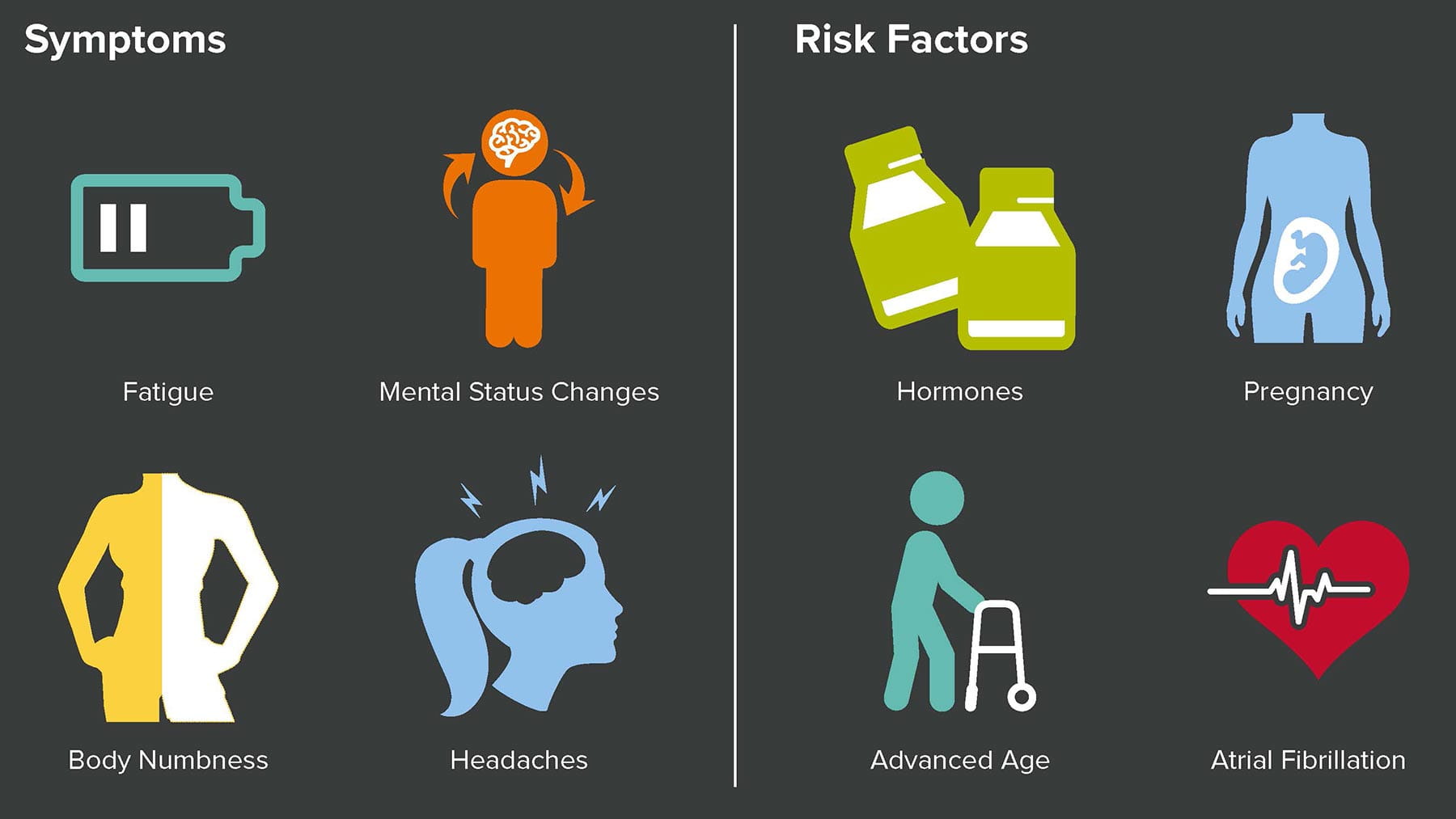What are some acute stroke symptoms in women?

Stroke is a medical emergency. Stroke occurs when blood flow to the brain is blocked (causing tissue to be injured) or when a blood vessel bursts causing bleeding. The lifetime risk of stroke for women between the ages of 55 and 75 in the United States is 1 in 5, according to a report by the American Heart Association.
Traditional warning signs of stroke include sudden onset of the following symptoms:
- Weakness or numbness on one side of the body
- Speech difficulty
- Difficulty with vision
- Trouble walking or loss of balance
- Unexplained severe headache
An easy way to remember this is to BE FAST. If you or a loved one is experiencing stroke symptoms, call 911 and go to the hospital immediately.
It’s important to know that women may present differently than men during a stroke. In fact, researchers have found that women are more likely to present with non-traditional symptoms than men, including:
- Pain
- Headache
- Fatigue
- Reduced altered mental status or confusion
The fact that women may present with non-classic stroke symptoms is important to recognize because overall, women have a higher lifetime risk of stroke than males.
Why are women at higher risk of stroke than men?
There are some potential situations that may place women at higher risk.
- Age. Women tend to live longer than men overall, and increasing age is a risk factor for stroke.
- Pregnancy. Women may have an increased risk of stroke during the time of pregnancy and delivery. Pre-eclampsia, a condition that is associated with high blood pressure during pregnancy, is associated with increased risk of stroke.
- Birth control pill/Hormone replacement therapy. The use of hormones may increase the risk of stroke in women.
- Atrial fibrillation. Atrial fibrillation risk increases with age. Women tend to live longer than men.
Women not only have a higher risk of stroke than men, they also have a higher risk of death from stroke. In fact, women account for about 60% of stroke deaths, and stroke kills twice as many women as breast cancer.
Women are at higher risk for stroke than men overall, but the risk of stroke varies with race among women as well. According to this report by the Center for Disease Control and Prevention, African American women have a higher risk and are more likely to die from stroke than white women.
Learn more about these indicators and risk factors by visiting the Comprehensive Stroke Center at The Ohio State University Wexner Medical Center. Watch this video below to learn more about BE FAST.
Vivien Lee is a neurologist and medical director of the Comprehensive Stroke Center at The Ohio State University Wexner Medical Center and a professor at The Ohio State University College of Medicine.





